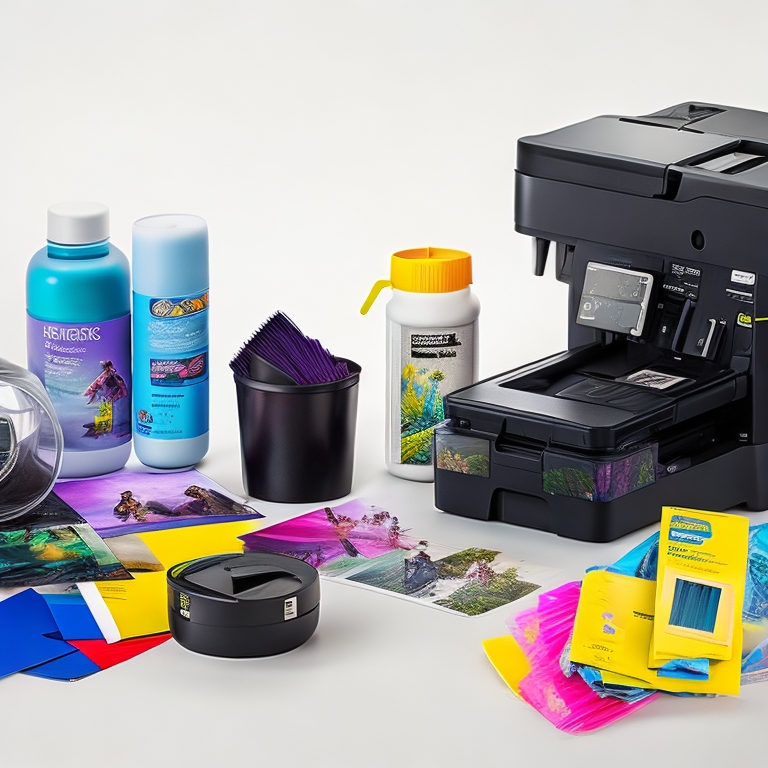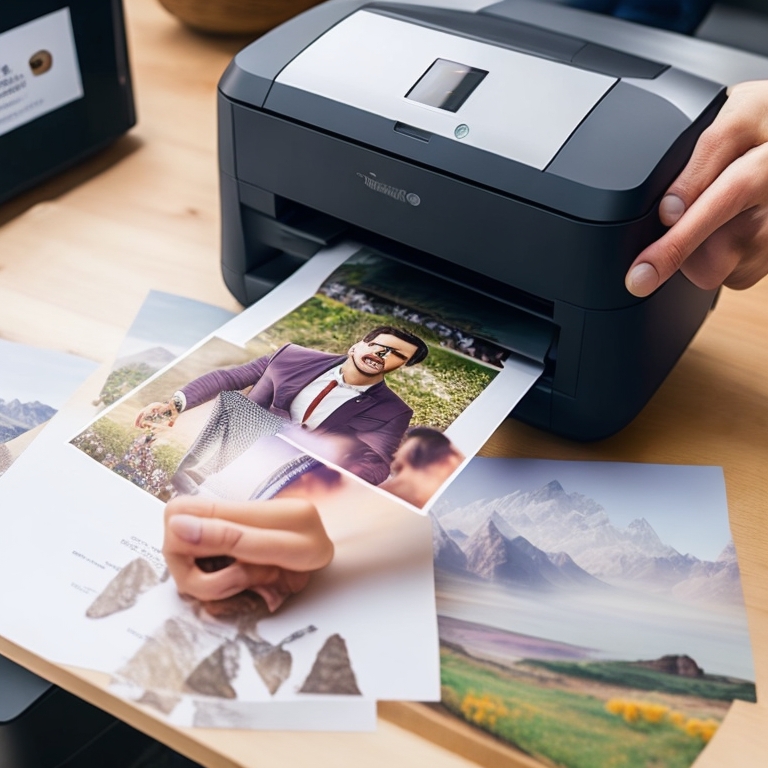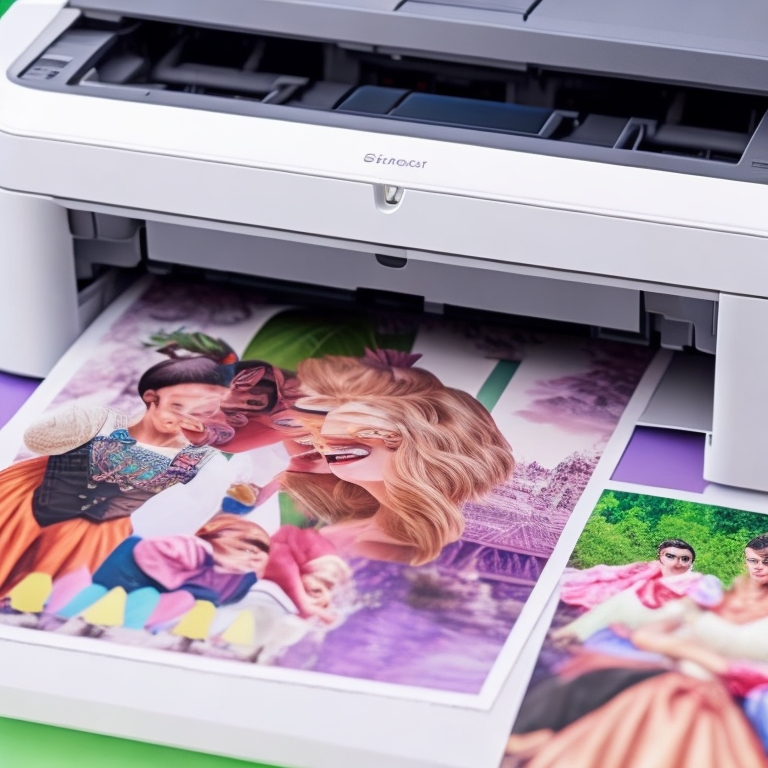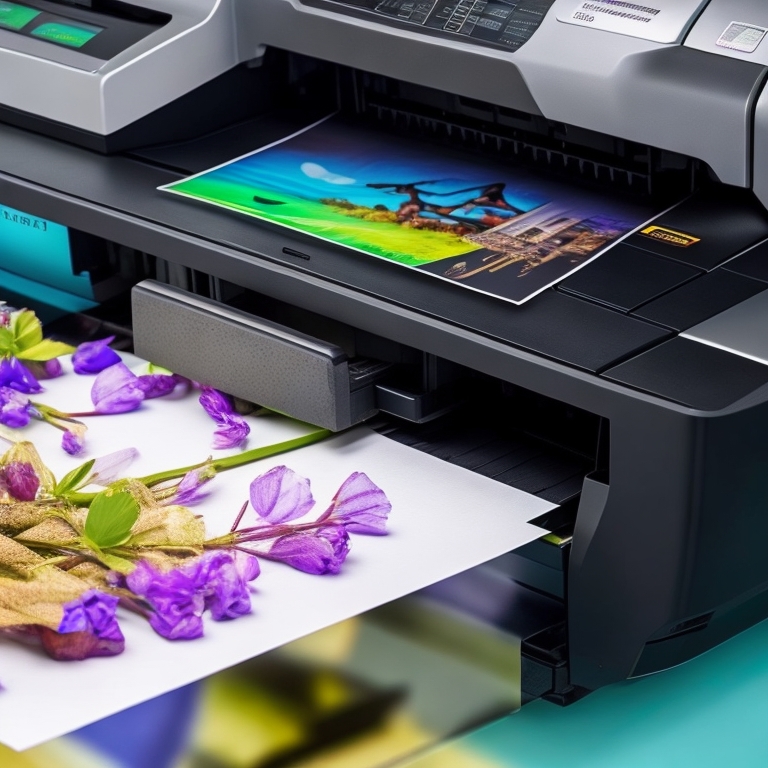In today’s digital age, where most of our photos live on smartphones and social media platforms, there’s something special about holding a physical print in your hands. Photo printers allow us to transform our digital memories into tangible photographs, preserving them for years to come. In this comprehensive guide, we’ll explore the world of photo printers, their types, key features, best practices, popular brands and models, and tips for achieving the best results.
I. Types of Photo Printers:
A. Inkjet Printers:
Inkjet printers are versatile and widely used for photo printing. They work by spraying tiny droplets of ink onto paper, resulting in high-quality prints with vibrant colors and sharp details. Examples include Canon PIXMA Pro-100 and Epson SureColor P800.
B. Dye-Sublimation Printers:
Dye-sublimation printers use heat to transfer solid dyes onto paper, creating continuous-tone prints. These printers are known for producing professional-grade photo prints with smooth gradients and natural color reproduction. Examples include the Epson SureColor P8000 and the DNP DS820.

II. Key Features to Consider:
A. Print Resolution and Quality:
Higher resolution printers produce more detailed prints, typically measured in dots per inch (DPI). Look for printers with a resolution of at least 300 DPI for sharp and lifelike prints.
B. Print Sizes and Paper Compatibility:
Consider the range of print sizes supported by the printer and the types of paper it can handle, such as glossy, matte, or specialty papers.
C. Connectivity Options:
Ensure the printer offers the connectivity options you need, such as USB, Wi-Fi, or Bluetooth, for seamless printing from various devices.
D. Mobile Printing Capabilities:
Look for printers that support mobile printing apps or wireless printing protocols, allowing you to print directly from your smartphone or tablet.
E. Additional Features:
Some printers come with LCD screens for easy preview and editing, memory card slots for direct printing, and built-in editing tools for adjustments and enhancements.

III. Best Practices for Photo Printing:
A. Choosing the Right Photo Paper:
Use high-quality photo paper that matches your desired print finish (glossy, matte, or satin) to achieve the best results.
B. Adjusting Color Settings and Profiles:
Calibrate your monitor and adjust color settings in your photo editing software to ensure accurate color reproduction on prints.
C. Calibrating the Printer:
Regularly calibrate your printer using the manufacturer’s recommended tools to maintain color accuracy and consistency.
D. Using Photo Editing Software:
Enhance your photos using software like Adobe Photoshop or Lightroom to adjust brightness, contrast, and color balance before printing. E. Proper Handling and Storage: Handle prints with clean hands to avoid fingerprints, and store them in acid-free sleeves or albums to prevent damage over time.

IV. Popular Photo Printer Brands and Models:
A. Canon:
Canon is known for its reliable and high-quality photo printers, such as the Canon PIXMA Pro-1000 and Canon imagePROGRAF PRO-300.
B. Epson:
Epson offers a wide range of photo printers, including the Epson SureColor P800 and the Epson Expression Photo XP-8600.
C. HP:
HP produces photo printers like the HP ENVY Photo 7855 and the HP OfficeJet Pro 9015, known for their versatility and print quality.
V. Tips for Getting the Best Results:
A. High-Quality Images:
Start with high-resolution images to ensure sharpness and detail in your prints.
B. Image Optimization:
Adjust image resolution, color balance, and sharpness in your photo editing software to optimize the photo for printing.
C. Printer Maintenance:
Follow the manufacturer’s guidelines for printer maintenance, including regular cleaning and ink cartridge replacements.
D. Paper and Finish Experimentation:
Try different paper types and finishes to find the one that best suits your photos and desired aesthetic.
VI. Photo Printers vs. Professional Printing Services:
A. Pros and Cons of Printing at Home:
Explore the benefits of printing at home, including convenience, control over the printing process, and the ability to print on-demand. However, consider the costs of ink and paper, as well as the limitations in terms of print size and professional finishing options.
B. Professional Printing Services:
Discuss the advantages of professional printing services, such as access to larger print sizes, a wider range of paper options, and professional finishing touches. Highlight the convenience of online printing services and the expertise of professional print labs.
Conclusion:
In this digital era, photo printers allow us to bridge the gap between the digital and physical worlds by transforming our cherished memories into tangible prints. By understanding the types of photo printers available, key features to consider, best practices for photo printing, popular brands and models, and tips for achieving the best results, you can embark on a journey of preserving your memories in vivid detail. Whether you choose to print at home or utilize professional printing services, the joy of holding a printed photograph in your hands is unmatched.
